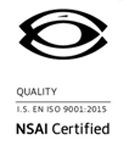ASME pressure vessels, which are leak-tight pressure containers, are designed to perform the critical task of holding gases or liquids at pressures higher or lower than ambient air pressure. They find immense applications across several industries including chemical, agricultural, energy, Oil, gas, military, defense, water among several others. To meet the varied requirements of such industries, ASME pressure vessels are designed and manufactured in different sizes. However, one of the critically important challenge the pressure vessel manufacturer usually faces is when determining proper size for the vessel. Pressure vessels must not be too big or small, but to the right size in par with the application requirements.
This post discusses a few points related to the risks with respect to logistics if the vessels are designed in improper sizes
ASME Vessel Design and Sizing Considerations
Many times, it can happen that the pressure vessels are manufactured in bigger or smaller sizes than applications which they are intended for. The manufacturer must not only consider the capacity requirements but also look at the transportation feasibility while sizing the vessel. Following are the problems if they are sized improperly.

- Transportation Risks if Vessels are Designed Big:The larger the size, more will be the risk of damage. ASME pressure vessels are ought to travel frequently to remote or international locations. During such long transit, larger vessels become difficult to maintain and manage, leading to severe damage unless appropriate steps are put in place. Also, during a long distance transport, pressure vessels are usually loaded onto a heavy haulage vehicle on road and later transferred to train or flight to reach the destination faster. However, if the size of the vessel is beyond a certain limit, Air freight won’t be possible due to overweight issues. This leads a delay in reaching the destination. Transportation of larger vessels on road requires special arrangements, so as not to obstruct the other vehicles. It also demands permission from local highway authorities and transport police. Sometimes, logistics service provider would need to take permission to transport the vessel by road several days and months in advance. Also, if you meant to transport the vessel by ship, you would also arrange for specialized haulage cranes to move the vessel of larger size.
- Transportation Risks if Vessels are Designed Small:The smaller the size, the more will be the number of pressure vessels being utilized for an application. How problematic it would be to manage several vessels if the work can be done with a single vessel. This happens in the case of ASME vessels designed without understanding the client requirements or designed on the basis of wrong specifications provided by the client, which leads to the manufacture of smaller vessels that fail to meet the demand. In such cases, the user will be forced to utilize two or three vessels in the place of one large one. It not only creates problems in transportation but also poses more damage and increased transportation/logistic charges.
Sizing the pressure vessels in a way to perfectly fit the capacity requirements of the client thus holds great significance for easy and quick transit handling. Lead time of transportation and risk of damage can be minimized to a great extent if pressure vessels are designed and sized according to the end user applications. Since designing pressure vessels and sizing them as per the capacity requirements of the client is a complex procedure, it is important that you get these services done from a leading manufacturer. Such a partnership will certainly help determine the right size for vessels that goes well with the application requirements.
Are you looking for a manufacturer who is an expert in ASME vessel design and sizing? BEPeterson is the one. The company specializes in ASME pressure vessels, ASME tanks, and vacuum furnaces, and has been serving clients across various industries, since 1935.
VP of Business Development Dan Szczurko joins the podcast to discuss the pressure vessel business & market segmentation. Furthermore, he gives an overview of the sales process from a customer’s perspective.

